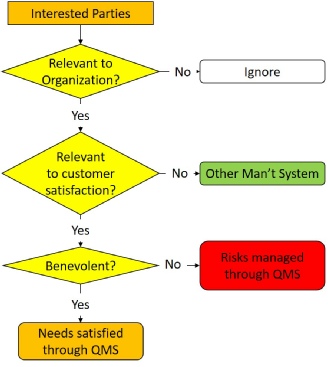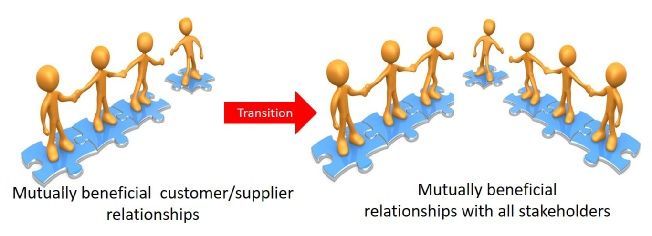Prior to ISO 9001:2015, the standard focused on identifying and meeting the requirements of customers but in the 2015 version, organizations are now required to determine the interested parties, their potential effects and their requirements that are relevant to the QMS.
Who are interested parties?
According to ISO 9000:2015, an interested party is a “person or organization that can affect, be affected by, or perceive itself to be affected by a decision or activity. Examples include customers, owners, people in an organization, providers, bankers, regulators, unions, partners or society that can include competitors or opposing pressure groups”.
How does this affect our QMS?
Basically it means that you needs to think about those parties who can affect or be affected by what your organization does. In the past, you may have only considered customers and even ignored suppliers and employees who can be affected by what your organization does.
However, the problem with this definition and the explanatory notes is that interested parties can include both benevolent and malevolent parties e.g. in the pharmaceutical industry some Animal Rights Campaigners maybe intent on closing down a research unit and use malevolent practices. It has become customary to refer to the benevolent parties as stakeholders because they put something into the organization in return for some benefit they gain from the relatinship, whereas malevolent parties put nothing into the organization and are intent of taking out as much as they can get away with and so we can refer to these parties as risks. ISO doesn’t make this distinction which means they are either ignoring malevolent parties or are assuming they are treated as risks.
You therefore need to divide the interested parties into two groups, stakeholders whose requirements the organizations seeks to satisfy and risks the organization seeks to manage. By filtering the stakeholders through several levels you identify those interested parties whose satisfaction is managed by the QMS as shown in the figure below.
Having identified the parties on which the organization depend for its success or which threaten its success you need to determine:
- The nature of interest by answering the question: For what reason do they have an interest in the organization?
- The effect by answering the question: What effect will their interest have on the organization's ability to satisfy its customers?
- The outcomes by answering the question: What are their requirements or intentions relative to the organization's purpose and strategic direction?
More details are in Chapter 11 and 13 of the ISO 9000 Quality Systems Handbook 7E

